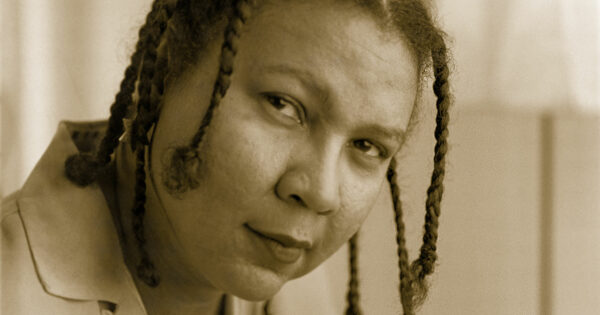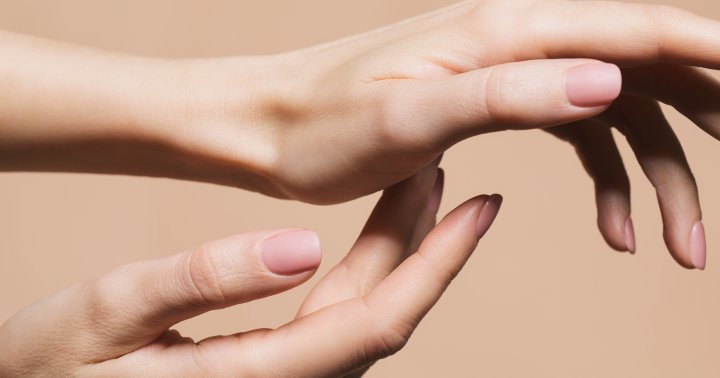How To Care For This Lush, Curly Hair Type + The Best Products
Once upon a time, there were only three known hair types — straight, wavy, and curly. But now we have many to help us understand our hair. Here, 3A.


Our editors have independently chosen the products listed on this page. If you purchase something mentioned in this article, we may earn a small commission.
March 18, 2022 — 11:02 AM
Once upon a time, there were only three known hair types: straight, wavy, and curly. But these days, we know that there are far more hair types than previously believed. And while general hair care guidance prevails, it’s important to customize your hair care routine to bring out the best in your tresses.
And for people that fall into the 3A category, it can require a bit of trial and error to find the right products that give you bouncy, healthy curls. Thankfully, there are plenty of pioneering naturals who’ve come before you. And because of their willingness to test and share their experiences, we can give you the rundown on what you need to know to bring out the best in your hair.
If you’re not familiar with hair typing, hearing someone say that they’re a type 4B or a type 2A can seem like a weird cataloging system. But for anyone who has anything other than straight hair, knowing your specific texture category can be the difference between having a curl-popping good hair day, and fighting frizz and tangles all day.
Type 3A hair is just one of 10 hair types outlined by celebrity hairstylist Andre Walker. Remember how we mentioned that once upon a time people only considered three hair types? Well, thanks to Mr. Walker, we've updated that outdated concept into a more comprehensive system with four hair types. General textures are categorized from one to four and then types two through four are broken down into three additional subtypes.
If you have type one hair, then your texture is straight, and no additional subtypes are included. Type two is reserved for curly hair and is broken down further into 2A, 2B, and 2C. Type three is for curly hair with that stereotypical corkscrew curl and is also divided into three subtypes, including this one as well as type 3B and 3C. And type four is for coily hair (also referred to as kinky-curly), where you'll have type 4A, 4B, and 4C.
Type 3A hair is the loosest of the general type three curl pattern and often looks like a very soft curl. The curl diameter is larger and can be easily mimicked on straight, wavy, and kinky-coily hair with a good curl set. Typically, 3A heads tend to have more shine than sheen to their hair and may have more of an S-curl than a corkscrew.
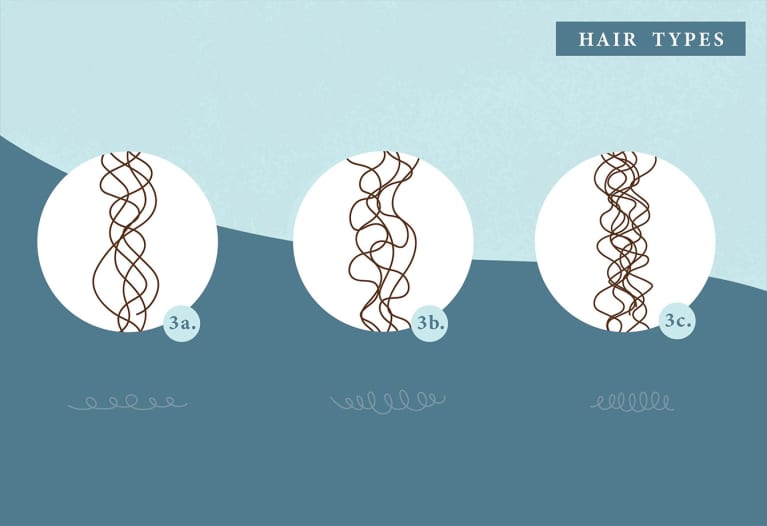
What does 3A hair look like?
As we mentioned earlier, 3A hair has a clearly defined curl pattern—except it’s more relaxed. Rochelle Graham-Campbell, the co-founder and CEO of Alikay Naturals notes that 3A hair has “defined/springy curls that have a loopy “S” shaped pattern with a medium texture."
Unlike type fours, 3A hair doesn’t always require manipulation to create a defined curl pattern. And while frizz and dryness are a common concern (which is true of all type threes), creating definition usually isn’t an issue. However, as with all wavy, curly, and kinky-coily hair types, 3As will usually have to pay attention to moisture retention to prevent frizz and dryness.
Hair care tips for 3A hair
No matter how much your hair type might mimic your best friend or that social media influencer you lowkey stalk…every head of hair is different. Just because you and someone else share a hair type doesn’t mean that your porosity will be the same.
And similarly, you may find that certain manipulation methods are a nuisance or that a certain product leaves your hair feeling sticky or gross. So for people who are just starting to embrace their natural curls, understand that trial and error is the name of the game.
Don’t be afraid to experiment. And if need be, invest in a few tangle-free hair ties and silk scrunchies for those days that an experiment didn’t turn out quite as you expected. Everyone’s body chemistry is different, so don’t be surprised if someone else’s holy grail product that’s lauded as a must-have for 3A heads doesn’t curl your toes.
Technically speaking, porosity is an issue for everyone, regardless of hair type. But for wavy, curly, and coily hair that’s more prone to dryness, anything other than “normal” porosity can make the fight to maintain moisture balance that much more difficult.
Porosity is measured in three levels: high, medium, and low. High porosity means that the hair shafts on each cuticle are completely open so moisture slips out easily. Medium porosity hair is considered normal with regularly aligned cuticles that help to retain sufficient moisture. And low porosity hair is similar to high porosity in that retaining moisture is also difficult because the cuticles are aligned too tightly. Fortunately, checking your porosity level is easy to do and all you need is this quick test, a strand of hair, and a glass of water.
2. Detangle from tip to root
Unlike other curls and coils, 3A tends to be a bit more forgiving. This means that you can occasionally get away with dry detangling. However, you should still detangle working up the hair shaft rather than starting at the roots. Even though your curl pattern is looser, starting from the roots can cause tangles to get worse.
Instead, take your time, use a wide tooth comb or a nylon bristle brush and work with intention. But for best results, even using a light spritz of water can help to loosen tangles and minimize resistance. For particularly stubborn tangles, invest in a good detangler or create a DIY one by combining a 4:1 solution of water to conditioner. This will give you extra slip and make your next detangling session much easier.
3. Quench your thirsty curls
Curly hair is naturally prone to dryness, even the looser curls found on 3A heads. This is because the enhanced curl pattern makes it harder for natural oils produced by the scalp to travel down your hair shaft.
So incorporating moisturizing products into your hair care routine is going to be important. And as a bonus, focusing on moisture can make it easier for you to enhance your curl definition. Dry thirsty curls are more likely to struggle with frizz. While humectant-rich products are a great go-to for thirsty curls, don’t be surprised if you have to experiment a bit. And don’t forget that water is a natural moisturizer. You can lock in moisture by sealing with a lightweight oil.
If you fall into the type three and four hair categories, you absolutely can’t just hop into bed with loose hair and hope for the best in the morning. That is unless you enjoy tangles and nightmarish snarls that look like you did battle in your sleep. With curly hair, you need to prep it at night so that it looks just as good the next morning. And when done properly, this translates to day-four hair that looks as good as day one.
Evelyn Metellus a stylist and founder of The Hair Doctor, shares that people with 3A hair should part “their hair into four sections, then part each section into two sections. Do a finger-roll with each section and use a bobby pin to hold the curl in place overnight. Carefully take out the bobby pin in the morning and use the right product to preserve the curl.”
5. Great hair starts from within
Worrying about troublesome tresses after they’re already dry, tangly, and split is the epitome of working backward. Great hair begins by taking care of yourself. Make sure you’re drinking enough water, and that you’re consuming a diet rich in essential nutrients.
Gwen Jimmere, the founder and CEO of Naturalicious, always tells her clients that dark green vegetables are a staple for a hair-focused diet: “These veggies are full of iron, vitamins, and folic acid that help prevent breakage and make your hair so more resistant to split ends.”
Hot tools are incredibly convenient and can help to cut down your prep time. However, too much reliance on hot styling tools like blow dryers or even flat irons when you want to switch up your look can backfire. In particular, anyone with wavy, curly, and coily hair is at risk of heat damage.
Heat damage manifests as sections of hair that don’t return to their natural texture on your next wash day. To avoid this, keep heat styling to a minimum. And when you do pick up a hot tool, never put it on your hair until you’ve properly covered your hair with a heat protectant. Likewise, set your styling tools to the lowest heat setting possible that still allows you to achieve your styling goals in a single pass.
7. Consider your wash day frequency
Generally speaking, the looser your curl pattern, the more frequently you can have wash days. Individual mileage will vary, but 3A types can often wash their hair every three to five days.
However, you’ll need to experiment and decide if you want a full wash day complete with shampoo and conditioner, or if your curls respond better to gentle co-washes. The answer to this question will depend on preference as well as how much product or dirt build-up you experience between wash days.
8. Don’t skip much-needed haircuts or trims
Don’t be so obsessed with achieving a desired length that you avoid getting regular trims. Left uncontrolled, split ends can manifest as breakage that travels up the hair shaft. Jiquea Evan, a stylist from GoodBody Salon in Oakland shares that “...you have to maintain your ends if you want to retain length. Always choose health over length.”
Type 3A hair has a lot of versatility as it tends to be a slightly silkier texture that can lend itself to less manipulation. However, it can also struggle with dryness if porosity isn’t handled properly. However, as with any hair type, finding the perfect balance of products and techniques can take a bit of trial and error. As you work through your natural hair journey, you may find that popular “Holy Grail” products don’t perform for you. But, the following picks are great starter options for anyone.
Best Sulfate-Free Shampoo for 3A Hair
For anyone concerned about harsh additives in their hair products—but also looking for a hair-boosting routine, this is a great option. Along with effectively cleansing your tresses with gentle ingredients, you’ll also get a boost of niacin, biotin, and vitamin B6 to help stimulate hair growth.
Exotic Sulfate-free Biotin Shampoo, The Hair Doctor ($12)
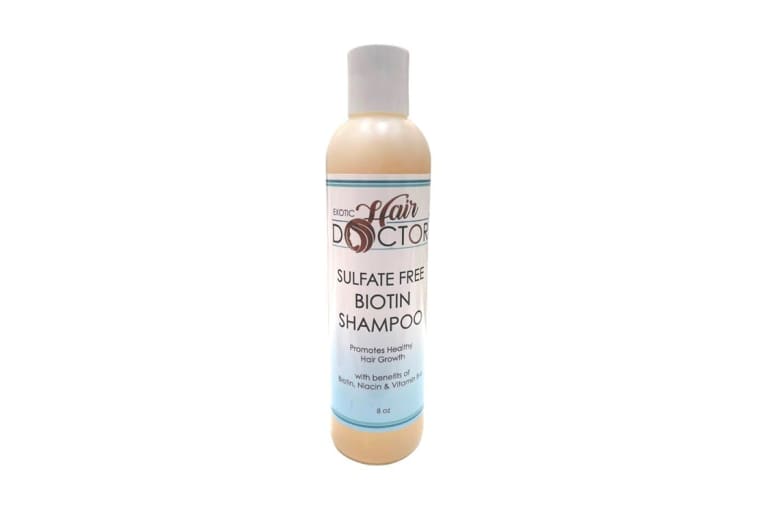
The Hair Doctor
Best Styling Attachment for 3A Hair
If there’s one segment that often benefits greatly from wash ‘n gos, it’s type threes. But if you want to fast-track your drying process, this is a universal blow dryer attachment that helps to effectively dry your curls in half the time without disturbing your curl pattern or encouraging frizz.
Pink Collapsible Diffuser, Rizos Curls ($19.99)
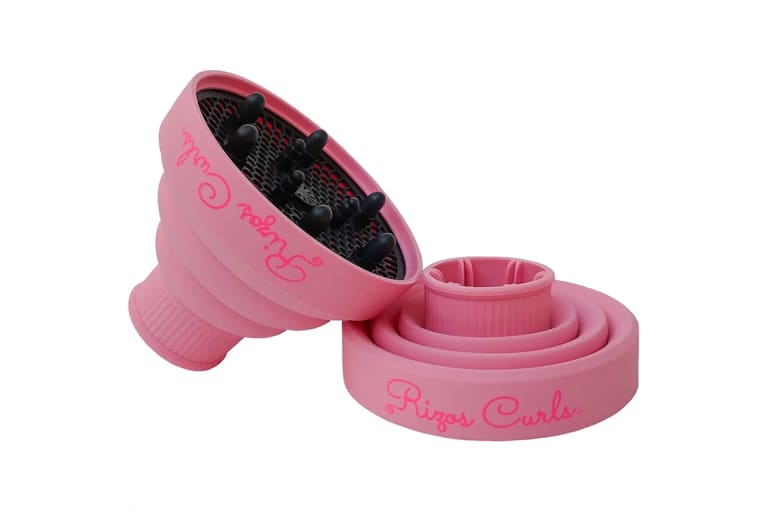
Rizos
Best Detangler for 3A Hair
Tangles happen, no matter your texture. But 3A doesn’t always need a heavy detangler. This option works to melt through even particularly stubborn tangles, while also infusing hair with much-needed moisture. Better still, it smells fantastic.
Miracle Shake Leave In Detangler Spray, Kaleidoscope ($19.99)

Kaleidoscope
Best Moisturizer for 3A Hair
All hair needs moisture. But if you already have fairly shiny, loose, curly hair, a heavy moisturizer can leave your strands looking weighed down and sad. This luxe oil is a great lightweight alternative. This certified organic pick can be also be used on your skin, making it a fantastic multifunctional product.
100% Pure Cold Pressed Organic Argan Oil, Pura D’or’s ($14.99)
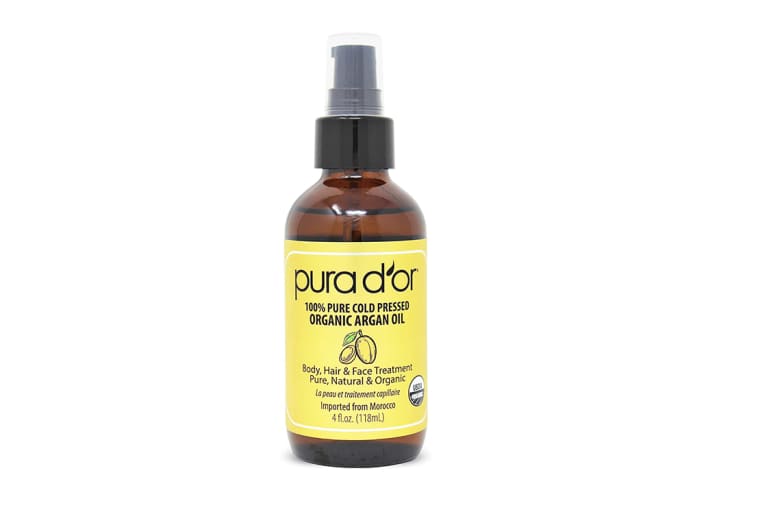
pura d'or
Natural hair comes in a variety of textures, including 3A hair. While 3A textures aren’t usually associated with the same concern that other type threes or type fours face, there’s still quite a bit of versatility for this hair type.
Looser curl patterns plus a lower reliance on styling techniques means that this hair type can often benefit from the popular wash ‘n go technique that essentially allows for the natural hair pattern to emerge through a relatively low manipulation process. Similarly, a quick blow dry with a round brush or air drying sessions followed by a flat iron can offer a quick switch to straight hair. However, as with other textured hair types, concerns over heat damage mean that you should never use a hot tool without first prepping your hair with a good heat protectant.
Meanwhile, 3A heads looking for a change from the routine can still rock protective styles. However, adhering strictly to the four to six-week timeline is critical to avoid damage from traction alopecia or long-term product or dirt buildup.
We can’t stress enough that good hair is healthy hair. No one curl pattern is preferable to another. However, 3As will enjoy a hair care routine that relies less on setting styles overnight (or several nights) and more on prioritizing moisture retention while minimizing knots and tangles. Meanwhile, your curl pattern still affords you the versatility to easily switch between straight and curly hair when the mood strikes. Above all else, accurately identifying your hair’s porosity and focusing on moisture retention will be the key to unlocking consistently good hair days.
Heal Your Skin.
Receive your FREE Doctor-Approved Beauty Guide
You are now subscribed
Be on the lookout for a welcome email in your inbox!
https://www.mindbodygreen.com/articles/3a-hair

 ShanonG
ShanonG 











